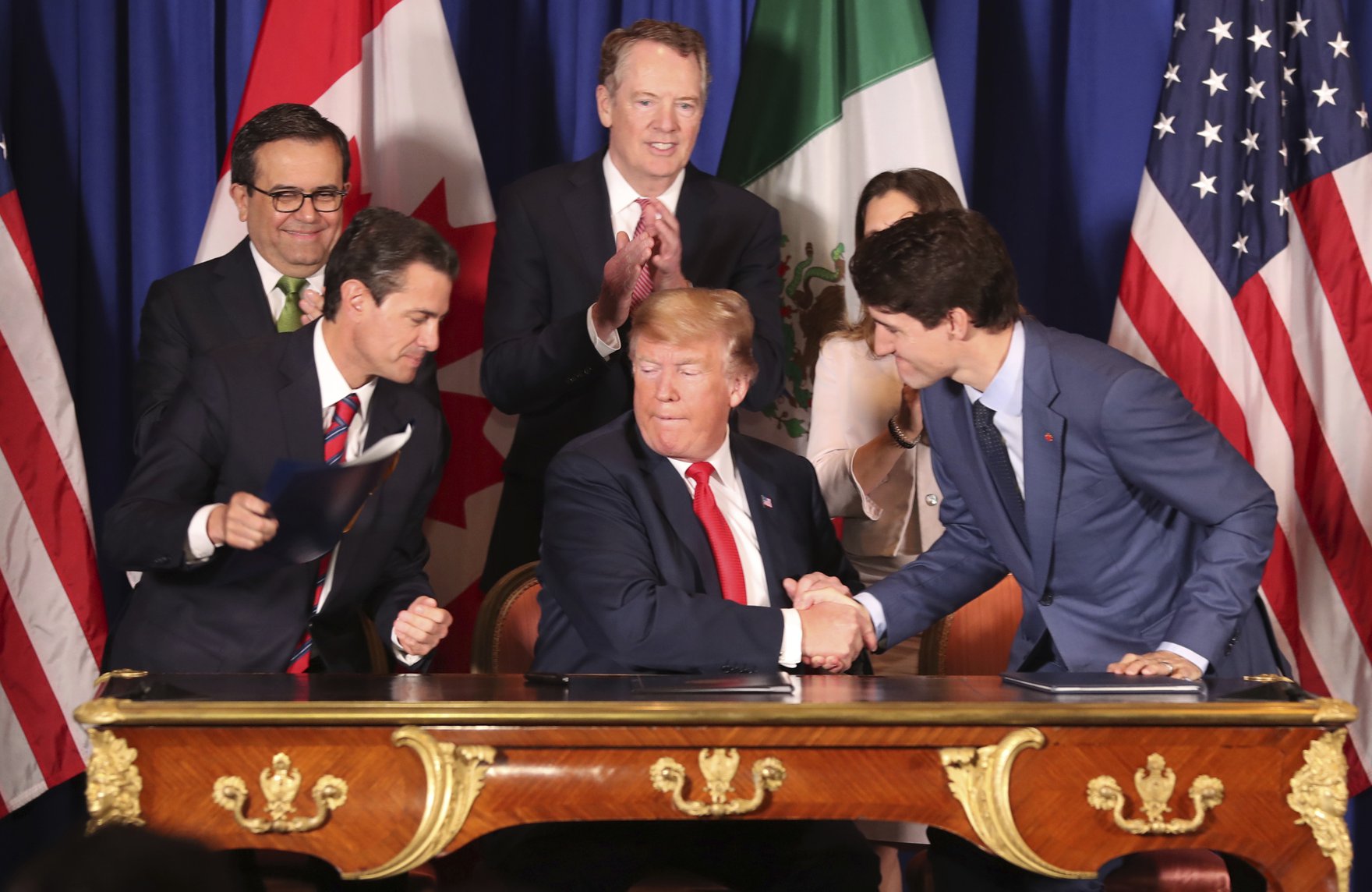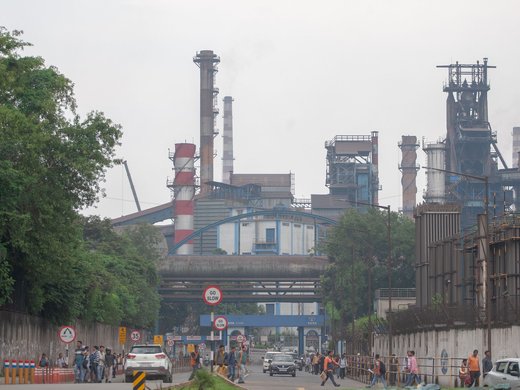Canadian Prime Minister Justin Trudeau, US President Donald Trump and outgoing Mexican President Enrique Peña Nieto joined together last week in a much-anticipated signing ceremony for the United States-Mexico-Canada Agreement — since signing, identified in Canada as the Canada-United States-Mexico Agreement (CUSMA) — ahead of the Group of Twenty (G20) summit in Buenos Aires.
Trudeau, who referred to the deal as the “new NAFTA,” in reference to the trade deal it is intended to replace, the North American Free Trade Agreement, used the occasion to put a spotlight on related concerns about controversial US tariffs on Canadian steel and aluminum exports.
President Trump gave a slight nod in response to Trudeau’s comments about how both countries need to “keep working” on efforts to remove the tariffs.
At issue is a 25 percent tariff on Canadian and Mexican steel entering the United States and a 10 percent tariff on aluminum imports that the United States imposed in May, based on controversial national security grounds. In June, Trudeau argued that it was “insulting” to suggest that Canada was now a national security threat to the United States. On July 1, Canada implemented tariffs in retaliation on an estimated CDN$16.6 billion in imports of US steel, aluminum and many other products, including yogurt, roasted coffee, orange juice, mayonnaise, toilet paper and more.
Flash forward to December: Canada’s participation in the signing ceremony was viewed by some as the last bit of leverage Trudeau would have when it came to removing the steel and aluminum tariffs. Critics contend that Canada will have a tough time trying to renegotiate, now that the deal has been signed.
That said, US Trade Representative Robert Lighthizer told reporters in at the leaders’ summit in Buenos Aires that negotiations related to the tariffs are still ongoing.
A possible agreement could still be worked out to replace the tariffs with a quota system, although there is no obvious deadline for discussions now that the signing ceremony is over. So far, it’s not clear what a mutually acceptable quota system might look like.
Some trade experts wager that Canada and the United States could agree to new quotas that would restrict aluminum and steel imports to the United States at 2017 and 2018 pre-tariff levels.
Avery Shenfeld, chief economist at CIBC Markets in Toronto, suggests that Canada might accept a quota cap on steel and aluminum exports to the United States. However, he argued that it was much more likely that Canada would only accept a quota that left significant room to grow exports beyond trade levels that existed immediately prior to the tariff implementation earlier this year.
Steel and aluminum tariffs aren’t an unambiguous win for the United States, as a number of sectors, including in energy production, automotive and other steel-consuming industries, have emerged as losers.
“Canada is still hoping they can make progress with the support of US steel and aluminum users,” Shenfeld said. “There are US economic interests that want free trade. For every steel worker that benefits in the US there are employees who lose in sectors that use steel and aluminum. There are a host of industries that want the tariffs removed.”
If the only deal that the United States offers leaves no room for Canada’s steel and aluminum exports to grow, don’t expect Canada to make a deal. Instead, expect Canada to continue to press its case through the World Trade Organization (WTO). Late last month, the WTO announced that it would investigate the legality of US tariffs on steel and aluminum imports based on national security concerns. WTO members including the European Union and China asked the trade body to review the justification, but its examination could take years.
A decision by the WTO to decide against the United States’ use of national security grounds to back its tariffs could drive Trump to leave the trade body altogether. A move to support his administration’s actions could encourage other countries to employ the same questionable tactic.
Not everyone is as pessimistic. Terry Haines, analyst at ISI Evercore, suggests in a recent report that a deal could be worked out by early 2019.
“Once all three countries agree on those changed circumstances — and they have been in close touch on the metals tariff issue for months, so that should not be difficult — expect action to end Canada and Mexico metals tariffs, we would guess early in the New Year,” Haines said.
A General Motors (GM) plant closures announcement last month, made as part of a global overhaul, is playing a role as well. Trudeau called the announcement a “heavy blow.” The auto giant announced it would halt production at five facilities in Canada and the United States, and cut its workforce by 15 percent.
In his comments during the signing ceremony, Trudeau suggested that the steel tariffs both countries have imposed on each other were partly to blame for the auto plant closures. “Donald, [the closures are] all the more reason why we need to keep working to remove the tariffs on steel and aluminum between our countries,” Trudeau said.
Trade experts have sought to tie the tariffs to the plant closures, with some insisting that, at the very least, they accelerated the action. But Shenfeld noted that GM didn’t point to the tariffs as a factor. He suggested that the tariffs probably had at most a “modest” impact on the plant closures. “The decision hasn’t swayed the Trump administration,” he said.
Negotiations on the tariffs continue at the same time that legislatures for all three parties to the “new NAFTA” move ahead with efforts to ratify the pact. The timeline on that effort may have just sped up — on Saturday, President Trump told reporters that he will be taking steps to terminate NAFTA shortly. That move would launch a six-month clock for Congress to approve the agreement or trade rules would revert to pre-NAFTA days. Trump’s comments are intended to send a loud message urging Democrats, who just retook the House of Representatives, to approve the White House’s agreement. Many Democrats have expressed concern about the deal.
Consider comments recently made by Senator Ron Wyden, a Democrat and ranking member of the Senate Finance Committee, which has jurisdiction over the USMCA.
“I think at this point with respect to that agreement there are many more questions than answers,” said Wyden. “The first question members are asking me on and off the finance committee is whether this deal is even enforceable. What I have heard senators consistently say is to ‘make sure there is enforcement of what is on the books now and what is going to be discussed.’”
As a result, Lighthizer may find himself wrapped up in congressional battles for the foreseeable future, all of which could put Canada’s steel and aluminum tariffs on the back burner.




